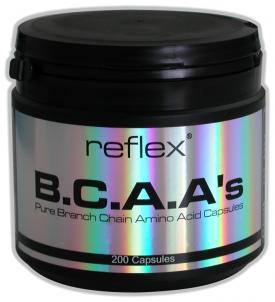
Point blank, exercise promotes increased BCAA oxidation (Shirmomura et al., 2004). This increased degradation of BCAA’s helps maintain energy homeostasis by providing carbon as a direct energy source and glucose homeostasis by providing substrates for the citric-acid cycle and gluconeogenesis (glucose-alanine cycle).
What Is Homeostasis?
Homeostasis is the tendency of the body to seek and maintain a condition of balance or equilibrium within its internal environment, even when faced with external changes. A simple example of homeostasis is the body’s ability to maintain an internal temperature around 98.6 degrees Fahrenheit, whatever the temperature outside.
In other words, it’s the ability of the body to maintain internal equilibrium by adjusting its physiological processes. The body tries not to have too much or too little of any important fluids, hormones, etc.
Plasma and muscle glutamine levels are also decreased post workout and it can take hours before they are restored (Rowbottom, 1996). Skeletal muscle and plasma glutamine levels are decreased during times of increased stress and metabolic demand, such as illness and exercise, while BCAA levels are often unchanged.
Some may view this as meaning the BCAA’s are not depleted or there is not a lack of BCAA’s during illness or exercise.
In reality, BCAA levels are not decreased because proteolysis of skeletal muscle and resynthesis of BCAA from branched-chain keto acids (BCKA) in the liver increases BCAA levels (Holeck, 2002). It is not that BCAA levels are not depleted, but rather they are kept elevated by breaking down skeletal muscle and resynthesizing BCAA’s.
Research
According to Houston (2001), “Glutamine content in skeletal muscle and other tissues appears to have a regulatory role in whole body protein synthesis.” Glutamine levels inside muscle govern protein synthesis and nitrogen balance and therefore muscle growth (VanAcker et al. 1999). The newly synthesized glutamine is created by using BCAA’s obtained from muscle protein breakdown (Holecek, 2002).
What all this means is glutamine requirements are trying to be met during/post workout by BCAA catabolism causing BCAA catabolism/muscle protein breakdown to be increased.
What Does Catabolism Mean?
Catabolism refers to the metabolic process that is characterized by molecular breakdown and energy release, such as the decrease of muscle mass. Thus, it means “muscle loss” in many common bodybuilding contexts. One way to increase skeletal muscle hypertrophy is by decreasing BCAA oxidation and therefore skeletal muscle catabolism. This can be accomplished by supplementing with BCAA and Glutamine.
Supplementing With BCAA & Glutamine
Glutamine administration has been shown to decrease leucine oxidation (Holeck, 2002). The mechanism behind this decrease in oxidation is believed to be that glutamine oxidation increases NADH levels (and increases the NADH/NAD+ ratio), thereby inhibiting BCKA dehydrogenase, which is the “key-enzyme” in BCAA oxidation (Holeck, 2002).
Research on leucine shows that once the minimum requirement of leucine for protein synthesis is met, leucine can then be used to activate various signaling pathways (Layman, 2003), such as the mTOR pathway.
What Does “mTOR” Stand For?
“mTOR” stands for Mammalian Target of Rapamycin, one of the body’s protein synthesis regulators, energy sensors, and nutrient sensors of amino acid availability, specifically of leucine. mTOR is activated when ATP levels are high, and blocked when ATP levels are decreased. mTOR activation is vital for skeletal muscle hypertrophy.
It may sound like leucine is free to exert its powerful effect of mTOR activation, but one must remember that protein breakdown and synthesis are occurring throughout the entire body; the body’s protein stores are in a constant state of flux. The constant body protein flux plus the increased BCAA/leucine oxidation caused by exercise means that leucine is in high demand and therefore may not be able to participate in muscle growth at its full potential. This is where supplementing with additional BCAA’s (or free-form leucine depending on your beliefs) and glutamine comes into play. Supplementing with glutamine will help keep skeletal muscle and plasma glutamine concentrations elevated and decrease BCAA/leucine oxidation and therefore muscle catabolism.
Conclusion
Supplementing with BCAA’s will help meet the increased BCAA oxidation caused by exercise by providing substrates for energy production and protein synthesis and serving as precursors for alanine and glutamine. This means there will be more BCAA/leucine available to stimulate protein synthesis through mTOR-dependent and independent pathways.
References
1. Holecek M. Relation between glutamine, branched-chain amino acids, and protein metabolism. Nutrition. 2002 Feb;18(2):130-3. Review.
2. Layman, DK (2003). The role of leucine in weight loss diets and glucose homeostasis. J. Nutr. 133: 261S-267S.
3. Rowbottom DG, Keast D, Morton AR. The emerging role of glutamine as an indicator of exercise stress and overtraining. Sports Med. 1996 Feb;21(2):80-97. Review.
4. Shimomura, Y. Murakami, T.Nakai, N. Nagasaki, M. Harri, R.A. (2004). Exercise Promotes BCAA Catabolism: Effects of BCAA Supplementation on Skeletal Muscle during Exercise J. Nutri. 134: 1583S-1587S.
Author: Derek Beast Charlebois
Website: www.scivation.com










